In this review, we will analyze five popular brands and their leading models.We will assess each brand based on performance,for various scenarios.
Here are the Top 5 Best-Selling Solar Power Stations:
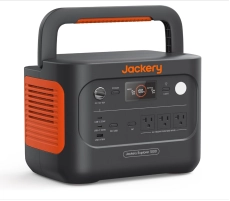
Why Choose Jackery Explorer 1000?
Jackery’s Explorer 1000 is perfect for people who want a reliable, portable power station for outdoor activities. With its wide range of ports and good customer reviews, it’s one of the top solar power stations for casual campers and light off-grid living.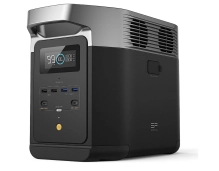
Why Choose EF ECOFLOW DELTA 2?
The DELTA 2 is perfect for users who need fast-charging and medium-to-high power storage for off-grid living or emergencies. It’s ideal for outdoor enthusiasts and those who rely on solar power chargers for laptops, refrigerators, and small appliances.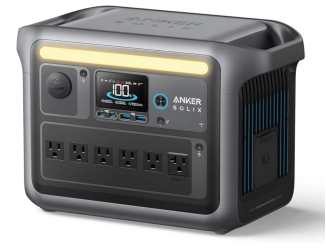
Why Choose Anker SOLIX C1000?
The SOLIX C1000 is best suited for those who need reliable, fast-charging capabilities in a compact form. It’s a great option for travelers or anyone needing a solar power charger for phones, tablets, and laptops.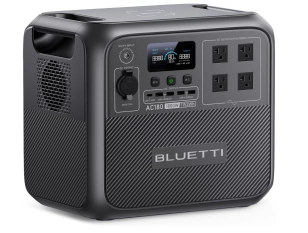
Why Choose BLUETTI AC180?
The AC180 is perfect for users who need high-capacity storage and efficient solar recharging in more permanent off-grid situations. It’s an excellent choice for solar power storage at a cabin, RV, or even as a backup power source for small homes.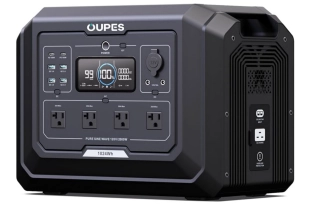
Why Choose OUPES Mega 1?
The OUPES Mega 1 is perfect for budget-conscious consumers who need a reliable solar power station for light use. It’s ideal for weekend campers or anyone needing a portable power source without breaking the bank.A portable power station is a battery-powered device that stores electricity to power electronics and appliances. It uses a rechargeable battery, typically lithium-ion or LiFePO4, and an inverter to convert stored DC power into AC power for devices like phones, laptops, or small appliances. You charge it via a wall outlet, solar panels, or car charger, and it delivers power through various ports (USB, AC, DC).
Yes, when used correctly, portable power stations are safe. They feature safety mechanisms like Battery Management Systems (BMS) to prevent overcharging, overheating, or short-circuiting. Reputable brands comply with U.S. safety standards (e.g., UL, FCC). Always follow the manual, avoid overloading, and use compatible chargers to ensure safety.
It depends on the station’s capacity (in watt-hours, Wh) and the device’s power draw (in watts, W). Divide the capacity by the device’s wattage to estimate runtime (e.g., a 500Wh station can power a 50W device for about 8–10 hours, accounting for efficiency losses). Check the manual for precise estimates.
Yes, but it depends on the station’s capacity and output. A small fridge (50–100W) or CPAP machine (30–60W) typically requires a 500Wh+ power station with sufficient wattage output (e.g., 300–500W). Ensure the station has a pure sine wave inverter for sensitive devices like CPAP machines.
Calculate the total watt-hours (Wh) needed by multiplying each device’s wattage by its runtime (e.g., 50W laptop x 4 hours = 200Wh). Add 20% for efficiency losses. Ensure the station’s output (W) supports all devices running simultaneously. Small (100–300Wh) suits phones; medium (300–700Wh) suits camping; large (700Wh+) suits appliances or outages.
Yes, most power stations support solar charging with compatible panels (typically 100–200W). Check the station’s input rating (e.g., 12–24V) and ensure panels match. Solar charging time depends on panel wattage and sunlight; for example, a 100W panel may take 8–10 hours to charge a 500Wh station in full sun.
Small power stations (up to 100Wh) are generally allowed in carry-on luggage per TSA regulations, while 100–160Wh models may require airline approval. Anything over 160Wh is typically prohibited. Always check with your airline and ensure the unit is clearly labeled with its capacity.
Recharge time varies by capacity and method. A 500Wh station may take 5–7 hours via a wall outlet, 8–12 hours with a 100W solar panel, or 10–15 hours via a car charger. Fast-charging models or higher-wattage panels can reduce times. Check the manufacturer’s specs for details.
Yes, portable power stations are ideal for outages, powering essentials like lights, phones, or medical devices. A 500–1,000Wh station suits short outages; larger models (1,500Wh+) can handle appliances like fridges. Ensure sufficient capacity and a pure sine wave inverter for sensitive equipment.
Portable power stations are quieter, emission-free, and safer for indoor use compared to gas generators, which produce carbon monoxide and require fuel. Power stations have limited capacity but are eco-friendly and easier to maintain. Gas generators suit heavy-duty, long-term use but are less versatile for small or indoor needs.